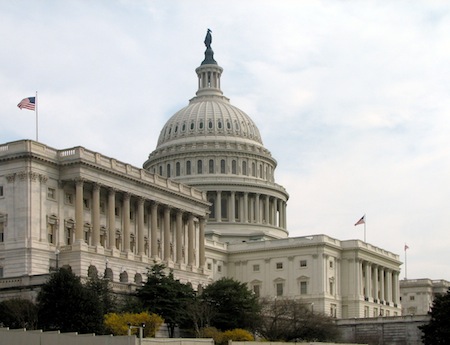Sens., Reps. Seek Live Audio of Landmark Supreme Court Rulings

A bipartisan, bicameral group of senators and House members has asked Supreme Court chief justice John Roberts to provide live audio from the court's upcoming rulings on cases involving the Affordable Care Act and same sex marriage.
In a letter dated Tuesday, the senators praised the court's practice of releasing same-day transcripts and end-of-the week audio, and more recently to release same-day audio in some recent cases. But they said that it would enhance transparency to provide live audio of the "public proceedings" of court sessions, including both the reading of decisions at the beginning of those sessions and the subsequent oral arguments on other cases.
"We continue to believe that the Court should permit live video broadcasts and support bipartisan legislation to make that happen," they added.
Given that millions of individuals will be watching closely for the healthcare and same-sex marriage rulings, they said, "the Court should provide the American people the opportunity to hear in real time the arguments and opinions that will shape our society for years to come."
The legislators pointed out that the other two branches of government can be accessed thanks to (cable-industry funded) C-SPAN and online streaming, but that the judicial branch remains "almost completely closed from the public eye."
C-SPAN has been one of the strongest proponents for putting cameras in the high court. Back in 2012, the court denied a C-SPAN request to televise oral argument in the first healthcare law challenge, though it did expedite audio transcripts, which C-SPAN aired.
"People may disagree on the outcome of any given case," the legislators said, "but we can all agree that the American public is better served when all three branches of government are transparent and accessible."
Broadcasting & Cable Newsletter
The smarter way to stay on top of broadcasting and cable industry. Sign up below
Among those signing on to the letter were Sens. Charles Grassley (R-Iowa), chair of the Senate Judiciary Committee; Al Franken and Amy Klobuchar (both D-Minn.), and Reps. Gerry Connolly (D-Va.) and Mike Quigley (D-Ill.).
Grassley has been a leading voice for cameras and microphones in the court as well. He first introduced a Cameras in the Court bill in 1999 and his request, along with Sen. Chuck Schumer (D-N.Y.), to then chief justice William Rehnquist resulted in the release of audio immediately following the Bush v. Gore ruling in 2000.
Gabe Roth, executive director of Fix the Court (http://www.broadcastingcable.com/news/washington/group-runs-cable-spot-a...), which has been pushing for allowing cameras, suggested it was a logical step on the road to more transparency.
"Just as the decisions made by the justices this term have been characterized by compromise between competing views of the Constitution, allowing live audio of opinion announcements is a logical compromise between the court's current technological jitters and the end goal of many transparency advocates," said Roth, "which is live video and audio of both oral arguments and decisions announcements.”
Contributing editor John Eggerton has been an editor and/or writer on media regulation, legislation and policy for over four decades, including covering the FCC, FTC, Congress, the major media trade associations, and the federal courts. In addition to Multichannel News and Broadcasting + Cable, his work has appeared in Radio World, TV Technology, TV Fax, This Week in Consumer Electronics, Variety and the Encyclopedia Britannica.

